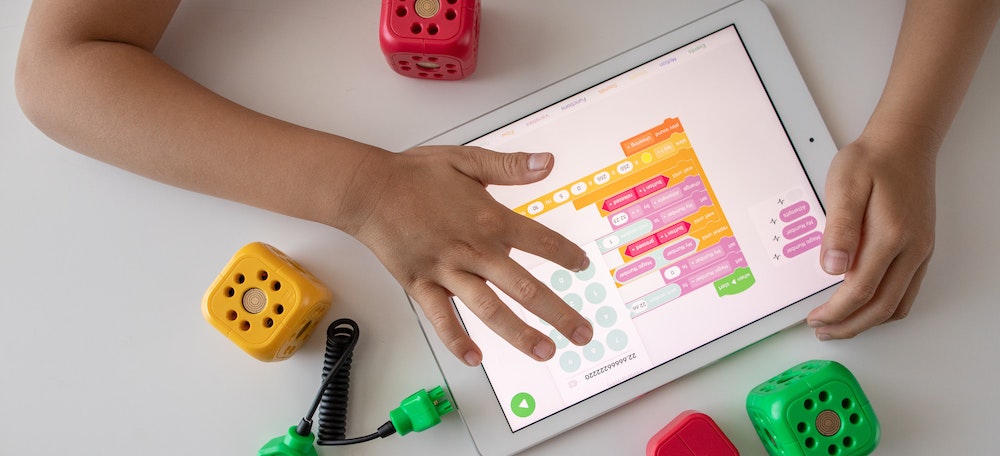ATLAS staff designed this interactive tool to show how the UDL framework can be applied in the design and delivery of large-scale assessments. Our hope is that assessment designers, developers, researchers, and teachers can use this tool in planning how to incorporate and self-evaluate their implementation of UDL principles in large-scale assessments.
Assessment Examples
Text and image display options (e.g., color, font size, magnification) are customizable for students. Teachers can easily choose preferred options...
If an assessment requires listening to sounds or words to answer a question, such as listening to baking soda react...
Options for sign interpretation are available for students. Teachers can easily choose preferred options for students, like sign language, via...
Options for machine or human read aloud, tactile graphics, or manipulatives are available for students. Teachers can easily choose preferred...
If an assessment requires watching and interpreting an image or video to answer a question, such as seeing bubbles in...
Scientific vocabulary is included only when absolutely necessary to access the science concept, and support for vocabulary is embedded throughout...
Item writers are provided simplified syntax and structure guidelines to ensure sentences are concise, not unnecessarily complex. Context clues and...
Options for machine or human read aloud, tactile graphics, or manipulatives are available for students. Students can access tables and...
Assessment items use video and/or images to support decoding, and language in assessment is concise and appropriately complex. Calculator tools...
Test administrators may translate the text for students who are English learners. A glossary is developed for science-specific vocabulary.
Assessment incorporates video and textual representation options, as well as simulations, picture response cards, individualized manipulatives, and Braille.
Assessment content centers on common, real-world science contexts that are relevant to students, and it can provide students information outside...
Assessment items are clustered around one context, for example, a science narrative about a hypothetical student conducting an experiment on...
Assessment content may be accessed through physical scale models or computer-generated model. Information is "chunked" into smaller elements, leading up...
Assessments may contain graphic organizers, concept maps, or scaffolds to link new items to prior knowledge. Situating items in familiar...
Gather feedback from teachers to understand what options students need to navigate screens (e.g., eye gaze, switches, adapted keyboard, touchscreen...
Students and teachers are familiar with assistive technology options available in testing platform. If a student uses switch and scanning options during...
Assessment items include simulations or other interactive virtual tools, as well as flexible options around using physical manipulatives. Students may...
Assessment content may be responded to through organizers, story webs, and concept mapping tools. For example, students can build a...
Assessment system provides individualized feedback to teachers on the progress of their students that is meaningful for them in understanding...
Assessments may contain graphic organizers, scaffolds, or models for similar science constructs but employ different strategies to solve, such as...
Provide teachers with test structure information so they can engage the student with planning for the test session. Be clear...
Unscored "thinkaloud"/"think about it" assessment items are embedded in a context or short narrative to support strategy development, such as...
Data within assessment items can be presented in tables or graphic organizers to facilitate organization and management of information, such...
Students should have opportunities to monitor their own learning and progress. For example, unscored items such as "How did you know?"...
Include an unscored "wonder question" to give an opportunity for students to reflect on what they already know about a...
Give the student a choice between two parallel assessments that assess the same knowledge and skills, just in different contexts...
Assessment content centers on common, real-world science contexts that are relevant to students, both during and outside of classroom instruction. Using...
Assessment context is instructionally relevant and age appropriate. Assessment is written at an appropriate level of complexity. For example, a...
Assessment content only includes basic imagery or graphics that enhance student context, not adding extra information for students to process.
Assessment items can be grouped by learning objective(s) that are clustered and linked together in complexity. Assessments can use "thinkaloud"/"think...
Item writers only focus on assessment content rather than system requirements to reduce and optimize the cognitive demand. Item writers are...
Assessment context is instructionally relevant and age appropriate. Assessment items are written at an appropriate level of complexity, including providing...
Flexible grouping for item writers; item writers can collaborate with other item writers in similar or different grade levels as...
Educator dashboard within assessment system provides timely and informative feedback to educator, including the student's mastery of targeted content skills.
Assessments go through a peer review process so item writers can use this feedback to improve their assessment before submitting it...
Include assessment items (unscored) that ask students to reflect on their performance and the assessment (e.g, "Did this assessment show...
Provide schedule for item writers with clear dates (if remote) or time (if in person) for deliverables.
Assessment delivery system incorporates opportunities for student to take breaks when needed.
Students should have opportunities to reflect on their own learning and progress. For example, unscored items such as "How did...







































